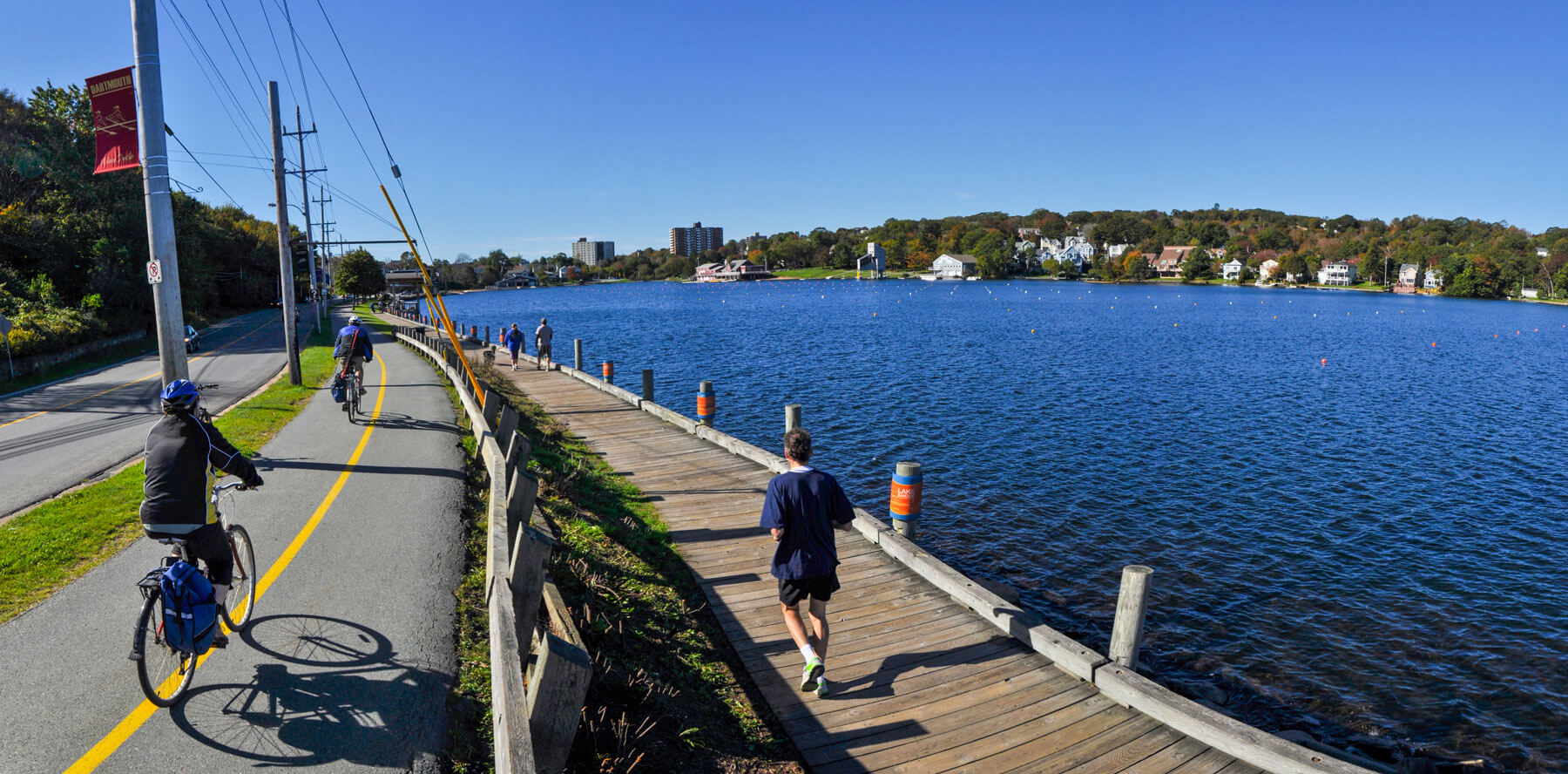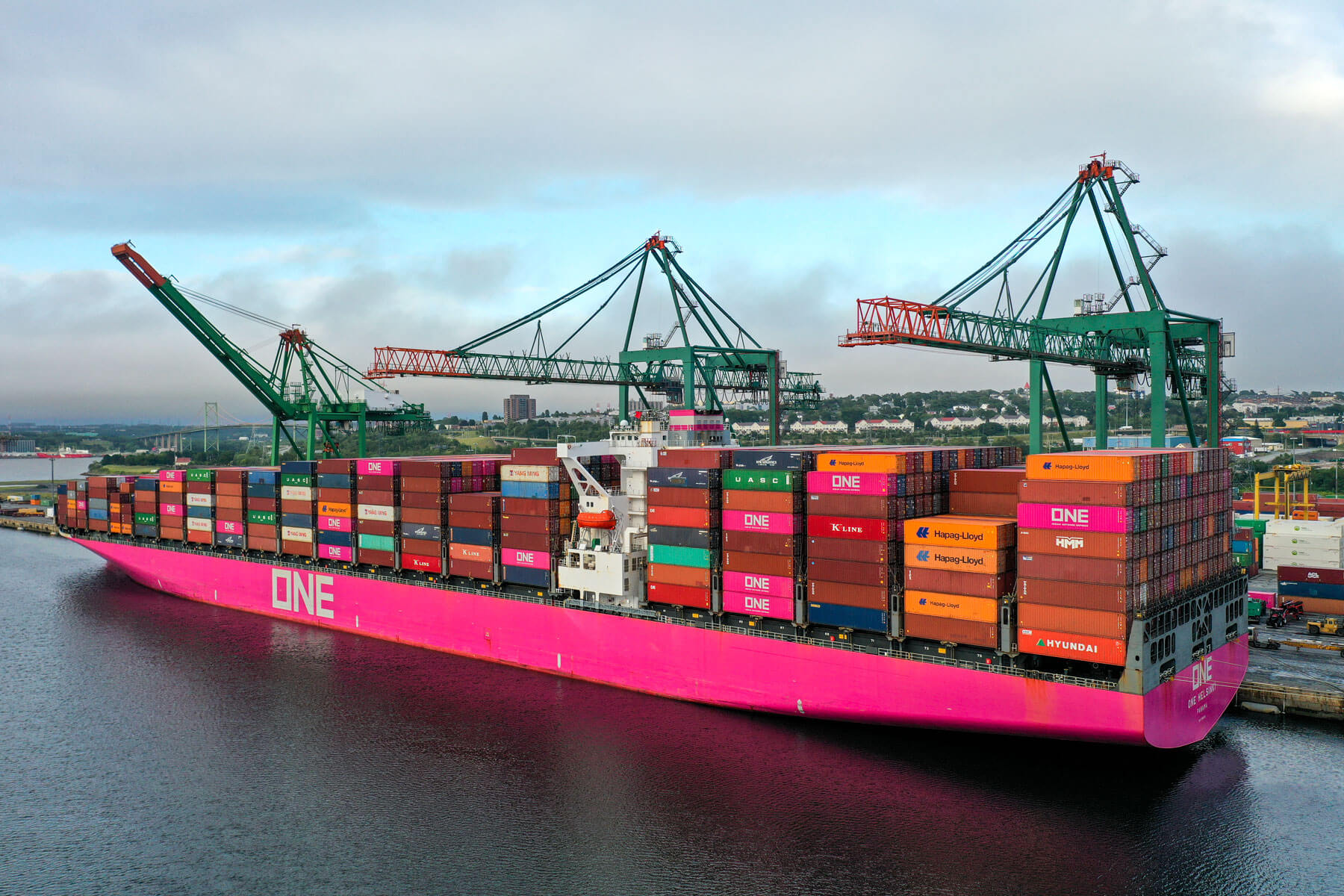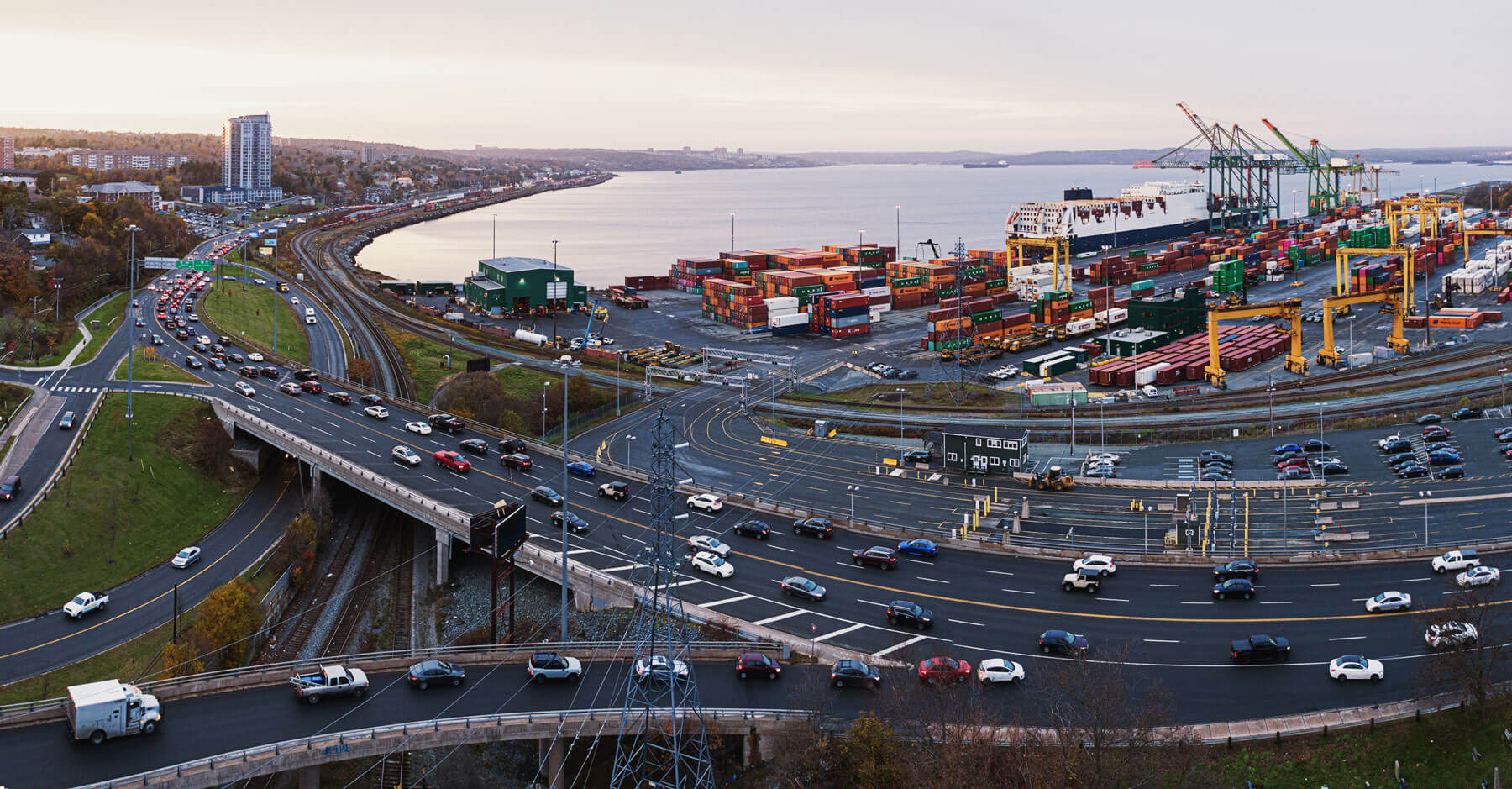
Nova Scotia Department of Public Works
The Nova Scotia Department of Public Works (NSDPW) is responsible for provincial transportation infrastructure, including provincial highways, roads, and bridges. NSDPW owns and operates the 100-series highway system which is made up of several major freeways in the region (Highway 101, 102, 103, 107, 111, 118), along with several other secondary highways within the municipality.

Halifax Regional Municipality
The Halifax Regional Municipality (HRM) is the largest municipality in Nova Scotia and encompasses the primary area of focus from a transportation infrastructure perspective. HRM is responsible for regional and community land use planning, municipal transportation infrastructure, and operates the municipality’s transit service.

Halifax Harbour Bridges
Halifax Harbour Bridges (HHB) is a provincial Crown corporation that is responsible for the construction, operations, and maintenance of the two suspension bridges that cross Halifax Harbour – the Angus L. Macdonald Bridge and the A. Murray MacKay Bridge, including several ancillary structures and roadways along the bridge corridors. The MacKay Bridge is the only option that commercial trucks can use to cross the harbour and is expected to require full rehabilitation or replacement within the next 20 years. HHB also maintains authority over any future bridge or tunnel structures crossing the harbour limits, including the Northwest Arm, although no such bridge or tunnel currently exists.

Halifax Port Authority
The Halifax Port Authority (HPA) is a federally regulated Crown incorporated, autonomous, non-share corporation that operates at arm’s length from the federal government. HPA is responsible for managing various port facilities in the Halifax Harbour. The Port of Halifax is the 4th busiest port in Canada and strategically located as North America’s first inbound and last outbound gateway and is situated in a naturally deep, ice-free harbour with direct access to the Canadian National Railway (CN).

Halifax International Airport Authority
The Halifax International Airport Authority (HIAA) is a non-share capital corporation established to operate, maintain, and develop Halifax Stanfield International Airport under a ground lease with the Government of Canada through Transport Canada. Halifax Stanfield is Atlantic Canada’s principal full-service airport, handling 52% of all Atlantic Canada air passengers and more than 46% of air cargo exports, thus providing passengers and cargo clients with direct access to markets across Canada, the United States, the Caribbean, Mexico, Europe, and Asia.

Atlantic Canada Opportunities Agency
The Atlantic Canada Opportunities Agency (ACOA) is a federal department that works with businesses, organizations, and communities to fuel economic development in Atlantic Canada. ACOA represents the region’s interest at the national level and works with other departments to ensure coordination of policies and programs.
